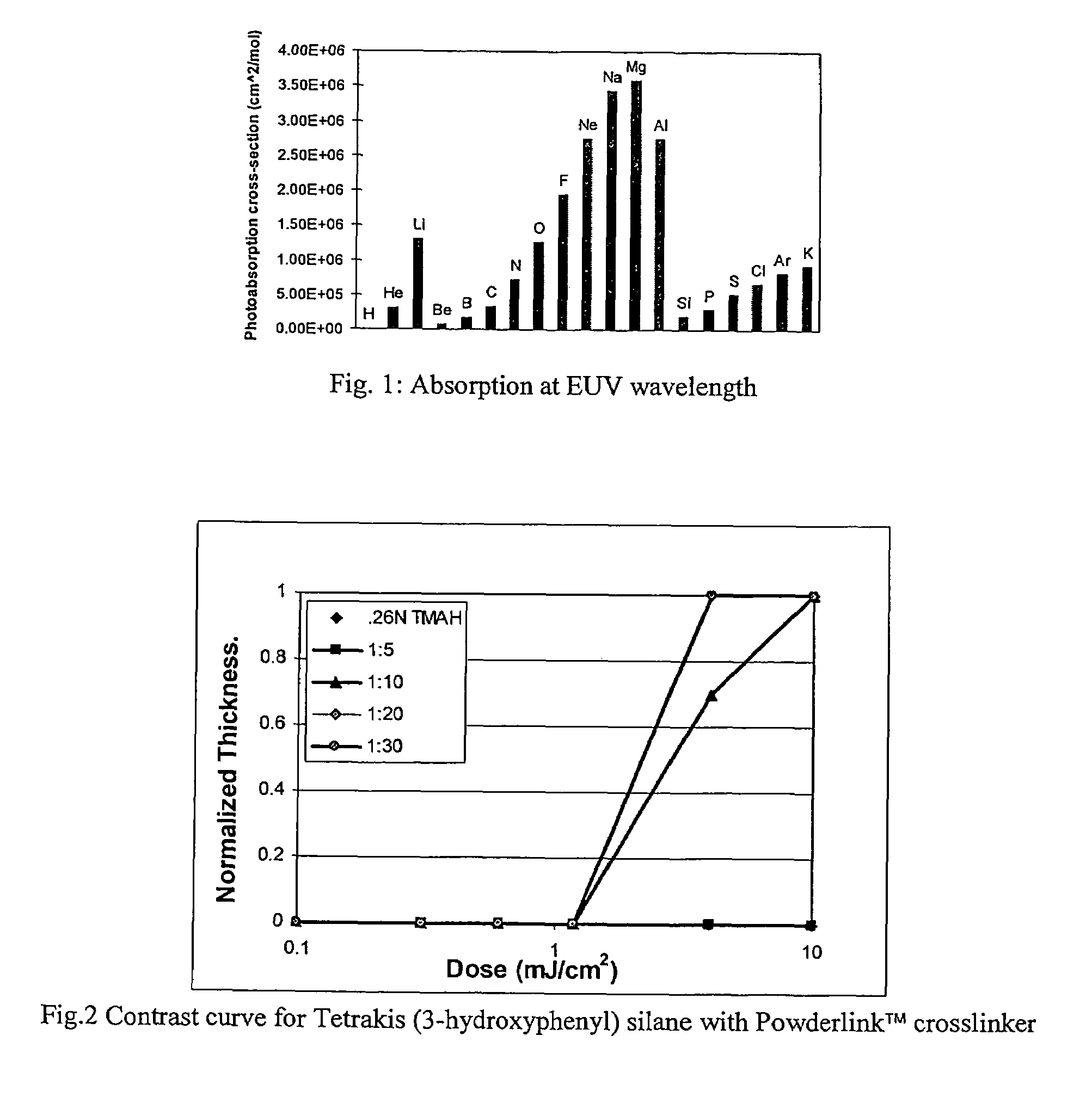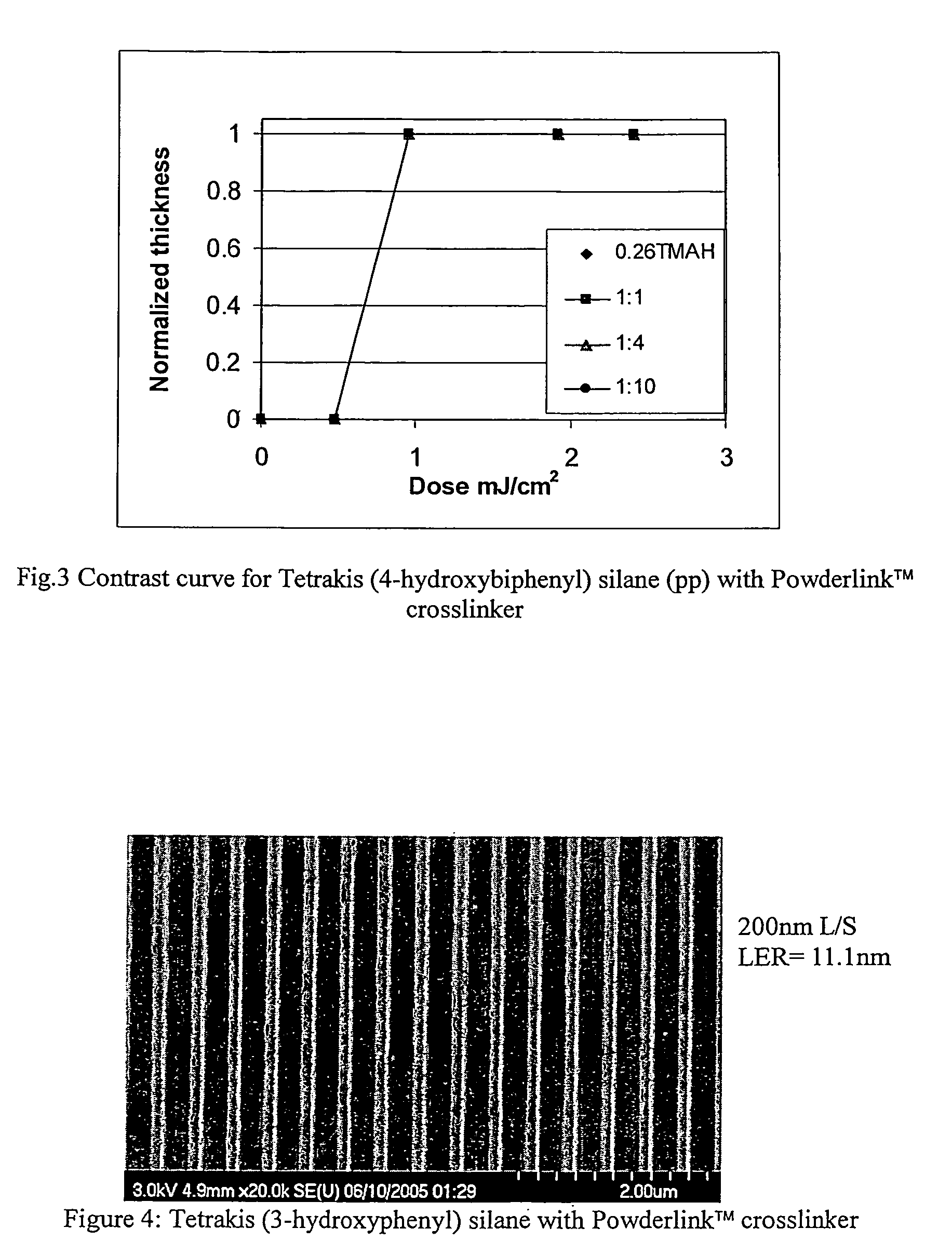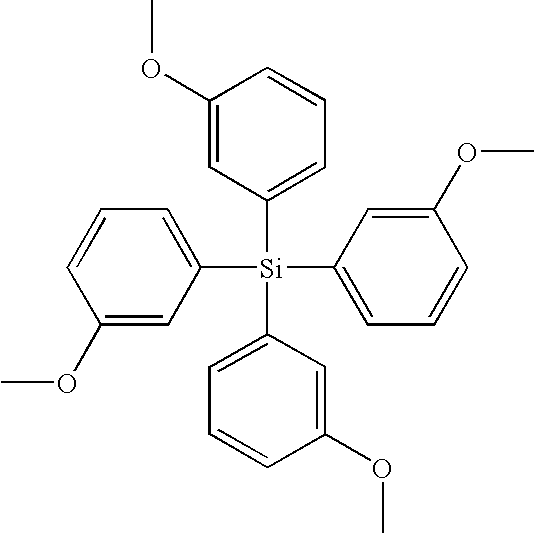Molecular glass photoresists
a technology of photoresisting and glass, applied in the field of molecular glass photoresisting, can solve the problems of inability to achieve sub-200 nm exposures, short wavelength resists, and general unsuitability for sub-200 nm exposures, and achieve the effect of transparent glasses at shorter wavelengths
- Summary
- Abstract
- Description
- Claims
- Application Information
AI Technical Summary
Benefits of technology
Problems solved by technology
Method used
Image
Examples
Embodiment Construction
[0048]The disclosed molecular glass photoresists combine the beneficial aspects of small molecules along with many of the favorable aspects of polymers. The disclosed molecular glass photoresists have a well defined structure without poorly defined end group locations. The disclosed molecular glass photoresists can be purified using standard chromatographic techniques.
[0049]Unlike other small molecules, the unique glass forming properties of the disclosed molecular glass photoresists stem from an inability to crystallize. Thus, the disclosed molecules can be trapped in a kinetically stable amorphous state. Like polymers, the disclosed molecular glasses demonstrate glass transition temperatures (Tg) significantly higher than room temperature despite their modest molecular dimensions. The disclosed glass photoresists can be characterized by the disorder in both intermolecular distance and orientation and the presence of free volume. Unlike single crystals and liquid crystalline materi...
PUM
| Property | Measurement | Unit |
|---|---|---|
| wavelength | aaaaa | aaaaa |
| wavelength | aaaaa | aaaaa |
| exposure wavelengths | aaaaa | aaaaa |
Abstract
Description
Claims
Application Information
 Login to View More
Login to View More - R&D
- Intellectual Property
- Life Sciences
- Materials
- Tech Scout
- Unparalleled Data Quality
- Higher Quality Content
- 60% Fewer Hallucinations
Browse by: Latest US Patents, China's latest patents, Technical Efficacy Thesaurus, Application Domain, Technology Topic, Popular Technical Reports.
© 2025 PatSnap. All rights reserved.Legal|Privacy policy|Modern Slavery Act Transparency Statement|Sitemap|About US| Contact US: help@patsnap.com



